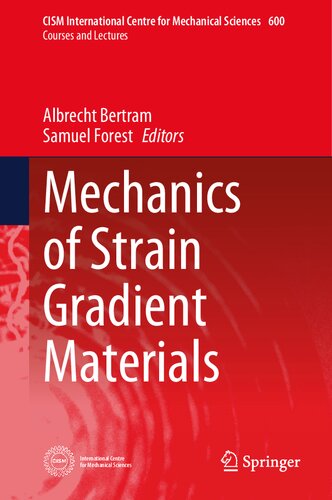

Most ebook files are in PDF format, so you can easily read them using various software such as Foxit Reader or directly on the Google Chrome browser.
Some ebook files are released by publishers in other formats such as .awz, .mobi, .epub, .fb2, etc. You may need to install specific software to read these formats on mobile/PC, such as Calibre.
Please read the tutorial at this link: https://ebookbell.com/faq
We offer FREE conversion to the popular formats you request; however, this may take some time. Therefore, right after payment, please email us, and we will try to provide the service as quickly as possible.
For some exceptional file formats or broken links (if any), please refrain from opening any disputes. Instead, email us first, and we will try to assist within a maximum of 6 hours.
EbookBell Team

5.0
38 reviewsOver the past 50 years, strain gradient material theories have been developed for the continuum modeling of size effects in materials and structures in terms of their elasticity, plasticity and fracturing. This book puts forward a unifying perspective to combine existing theories involving the higher order gradient of the strain tensor, or of plastic strain. It begins by reviewing experimental findings on the existence (or non-existence) of size effects on the mechanics of materials. In turn, the book devises first, second and higher order strain gradient theories from general principles, and presents constitutive frameworks that satisfy thermodynamic requirements. The special case of strain gradient plasticity is then developed and illustrated via computational analyses of size effects on the plasticity of metals at small scales. In closing, the book explains the origin of gradient effects in the case of lattice structures by drawing on homogenization theory.